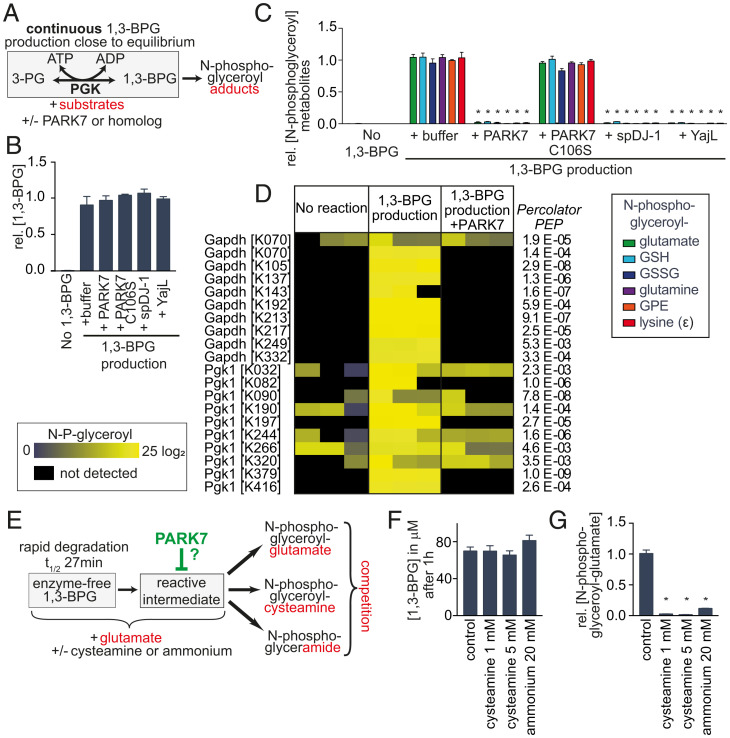Fig. 6.
PARK7 prevents damage caused by a glycolytic metabolite without destroying this metabolite. (A) Experimental setup for the continuous production of 1,3-BPG by PGK, ATP, and 3-phosphoglycerate (3-PG) in the presence or absence of recombinant PARK7 or putative orthologs. (B and C) 1,3-BPG levels (B) and phosphoglycerate-modified metabolites (C) were quantified by LC-MS after 4-h incubation of metabolites with continuous 1,3-BPG production ± PARK7, its catalytic mutant C106S or its E. coli (yajL) or S. pombe (spDJ-1) homologs. (D) N-phosphoglyceroyl modifications of proteins were quantified by LC-MS after an overnight reaction where 1,3-BPG was produced by PGK, ATP, and 3P-glycerate. The protein GAPDH was included to allow parallel experiments, where 1,3-BPG was produced from glyceraldehyde 3-phosphate (SI Appendix, Fig. S5). For details see Dataset S2. (E–G) Experimental setup to assess the competition between cysteamine or ammonium and glutamate for a reaction with 1,3-BPG or a putative reactive degradation product (E), spectrophotometric quantification of 1,3-BPG concentrations after 1 h (F), and quantification of N-glyceroyl-glutamate after 2 h by LC-MS (G). Values are means ± SEM of three independent experiments (B, C, F, and G) (n = 3), and were normalized to the “1,3-BPG + buffer” condition within each experiment separately for each metabolite. Asterisks denote statistical significance (*P < 0.05) compared to the “1,3-BPG + buffer” condition (C and G).

